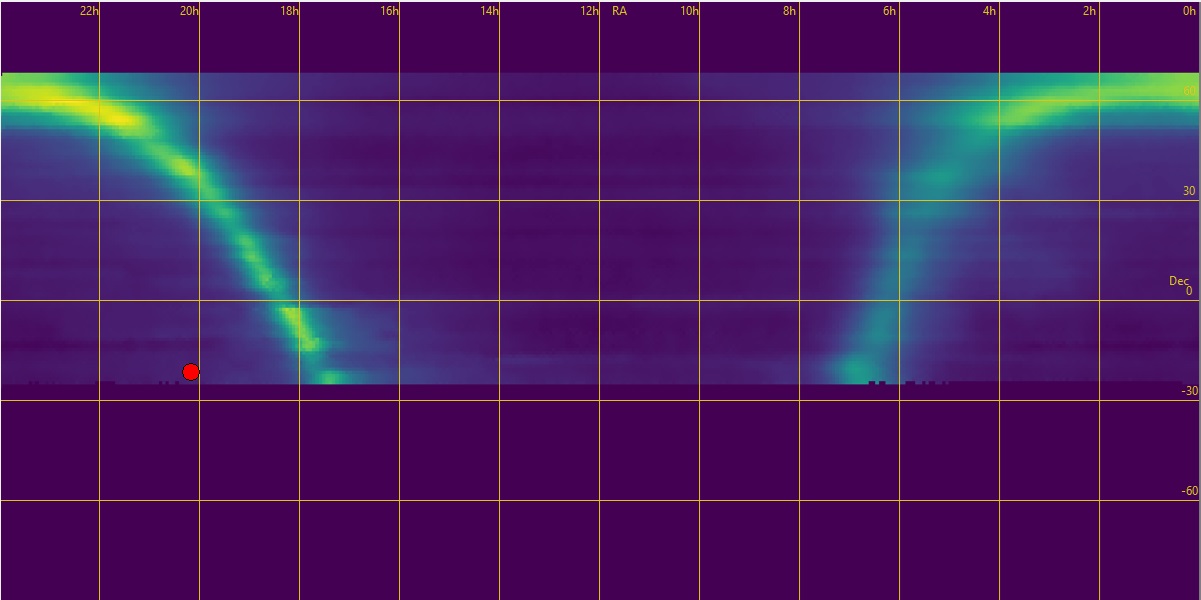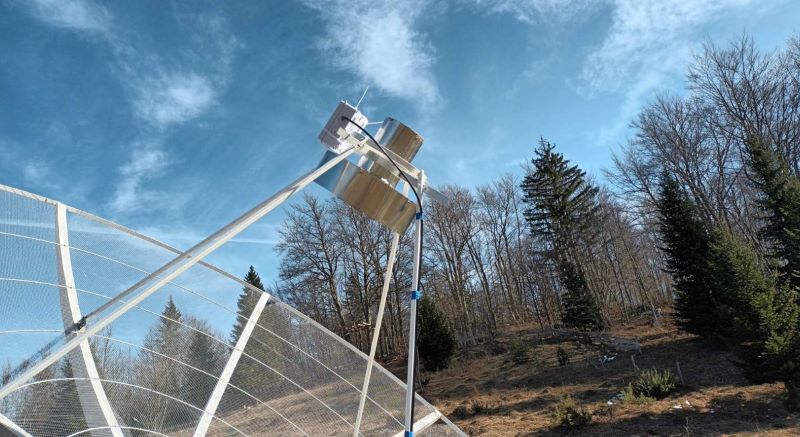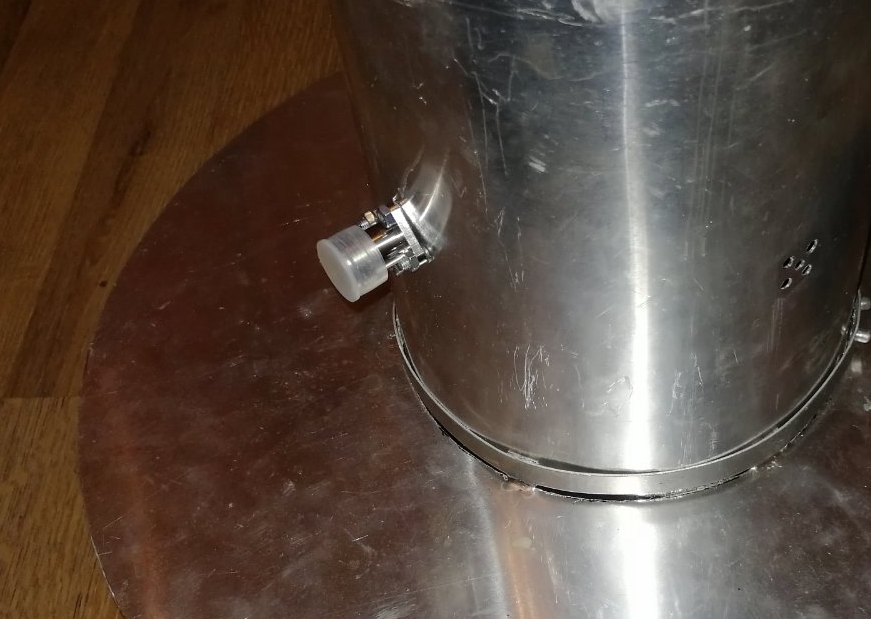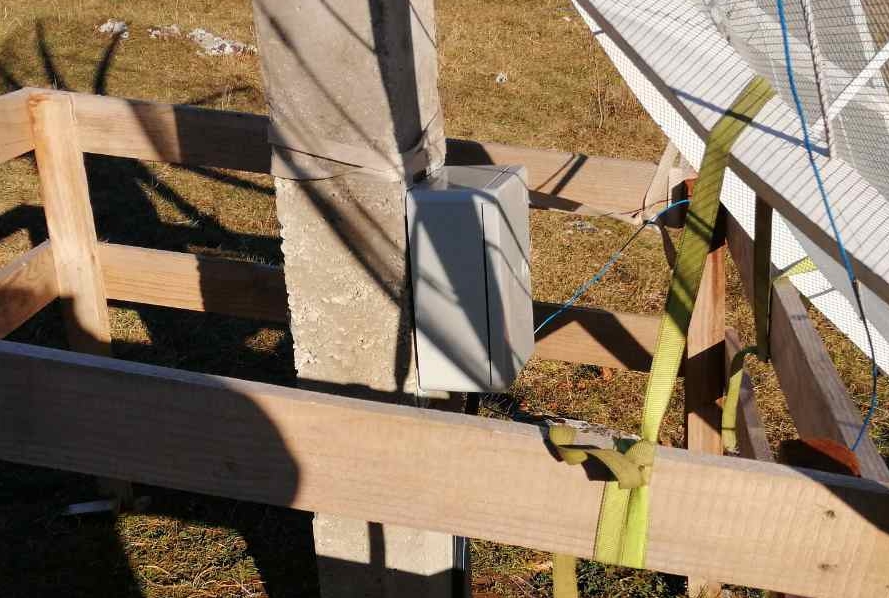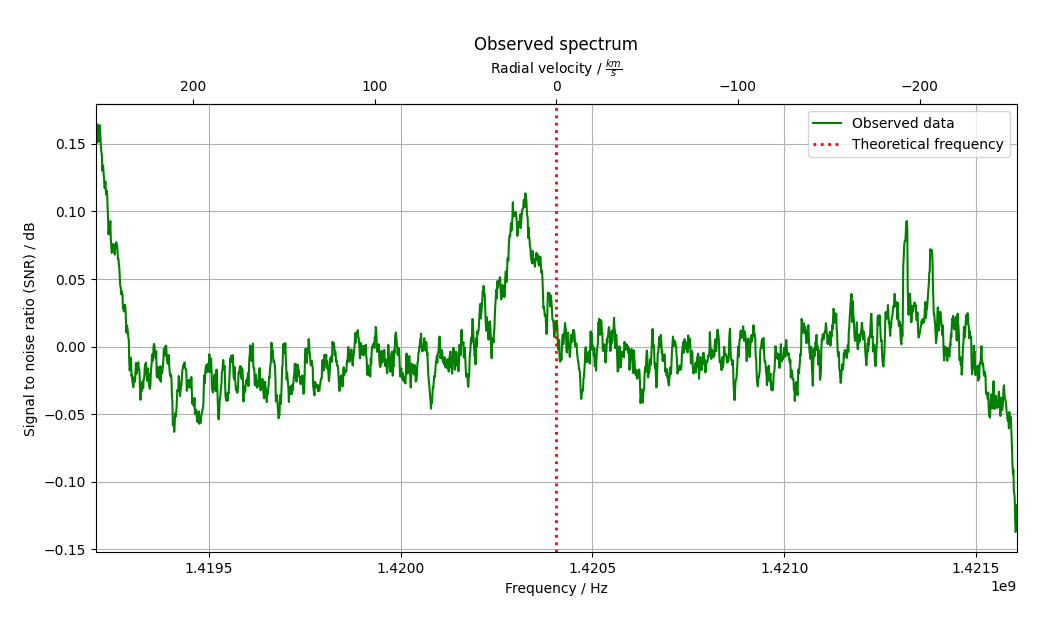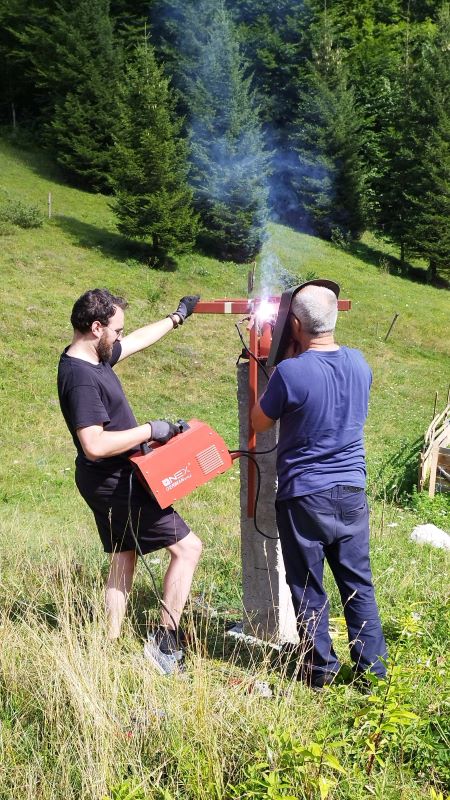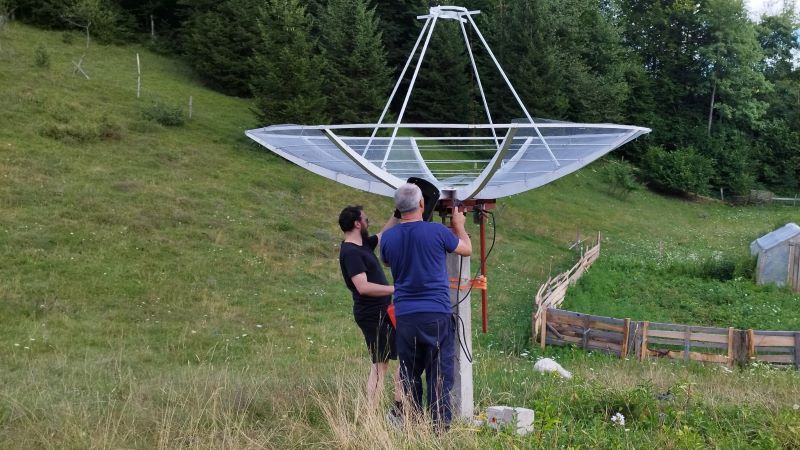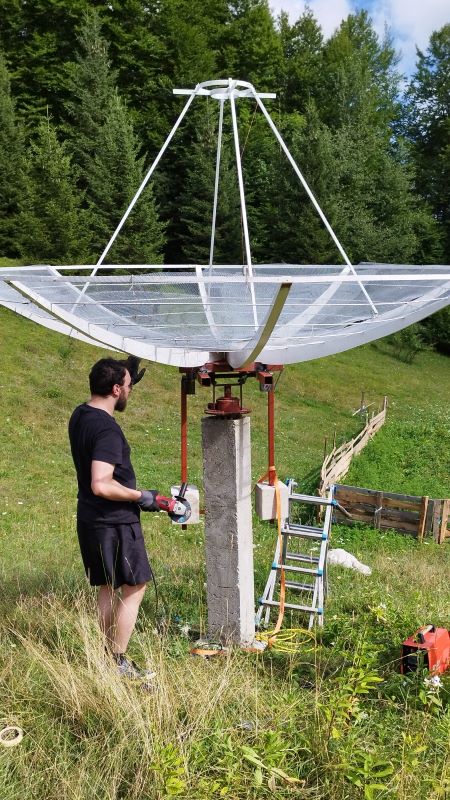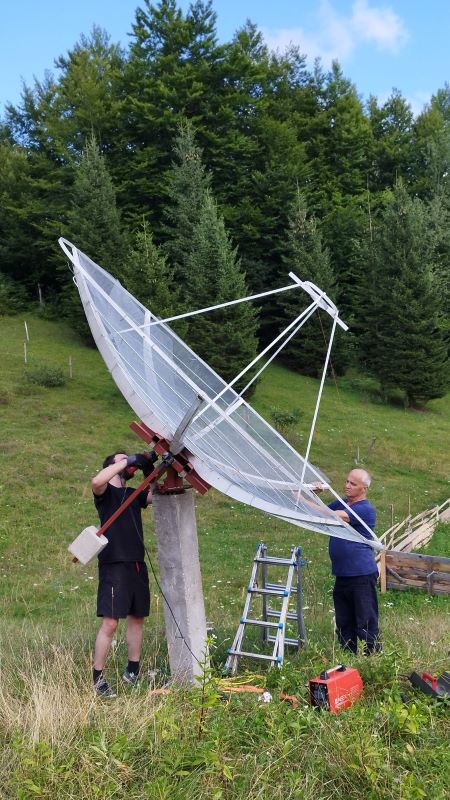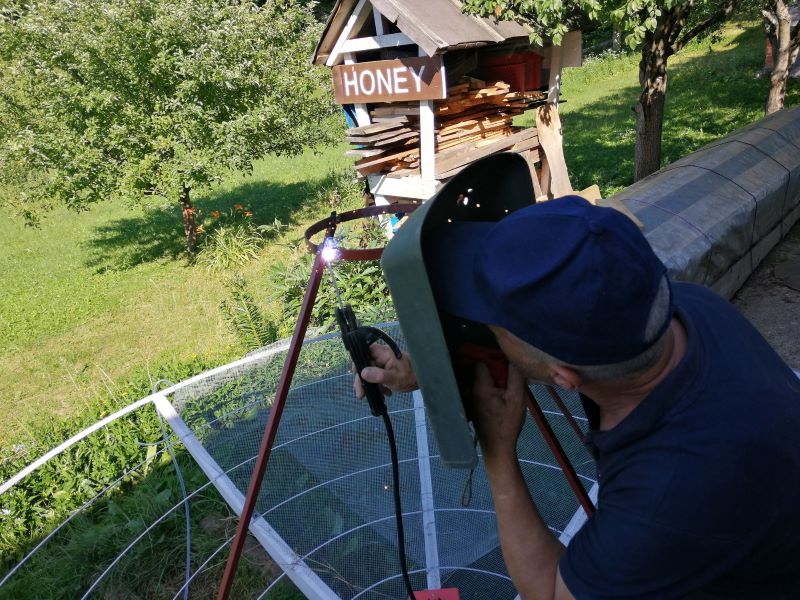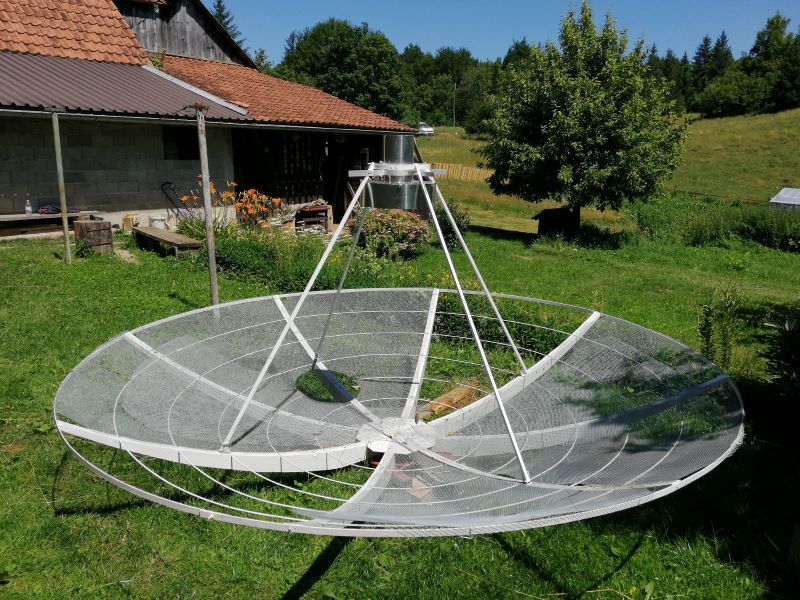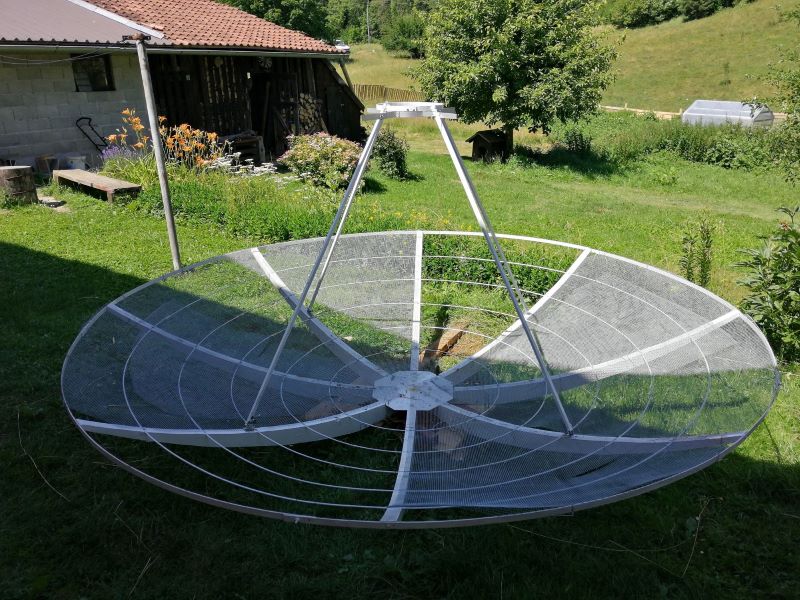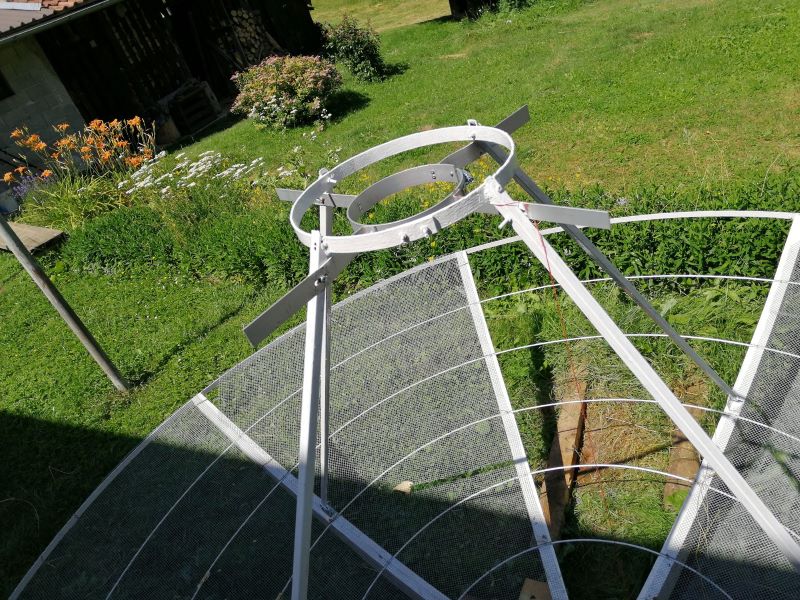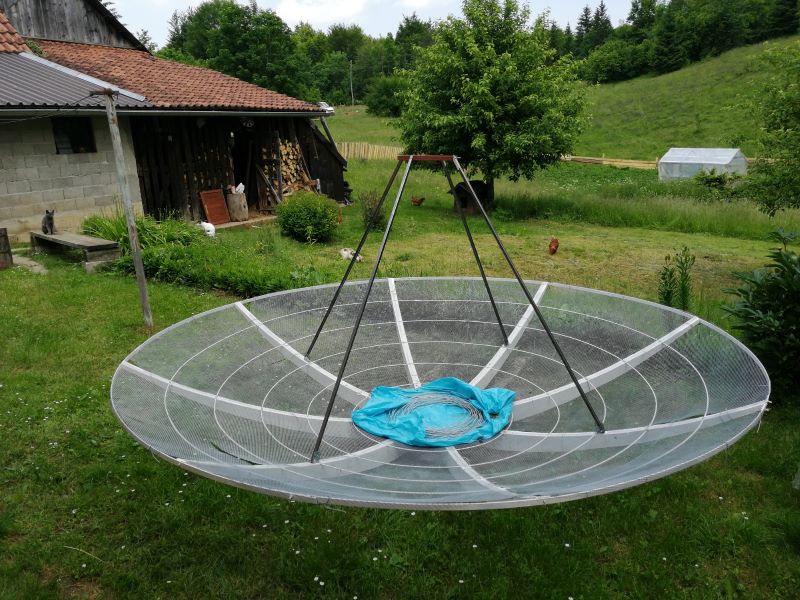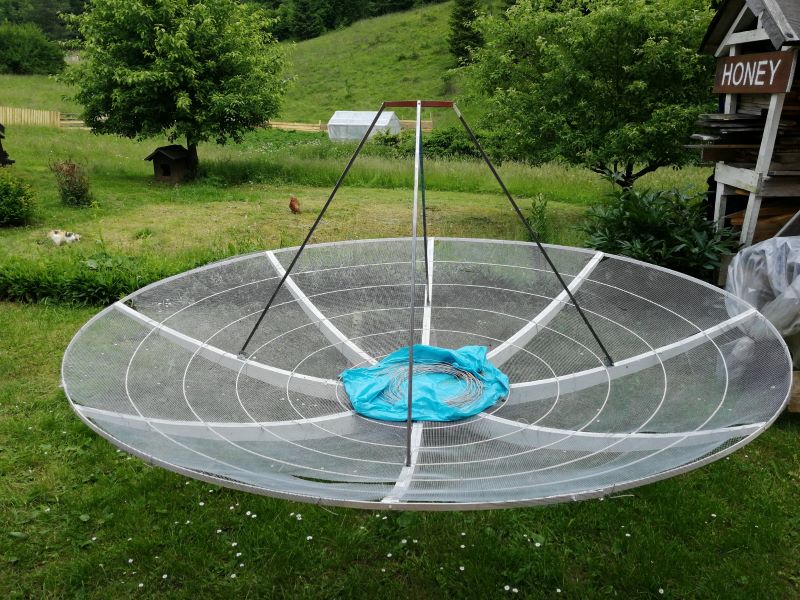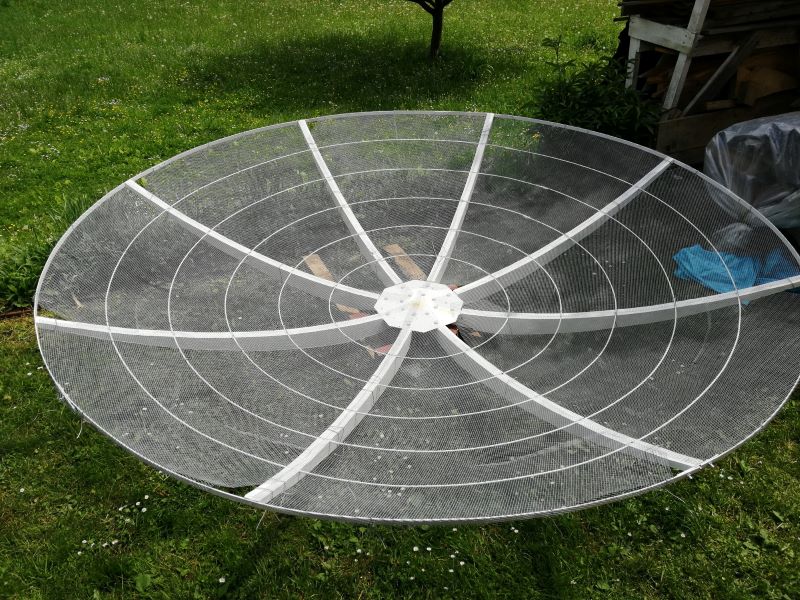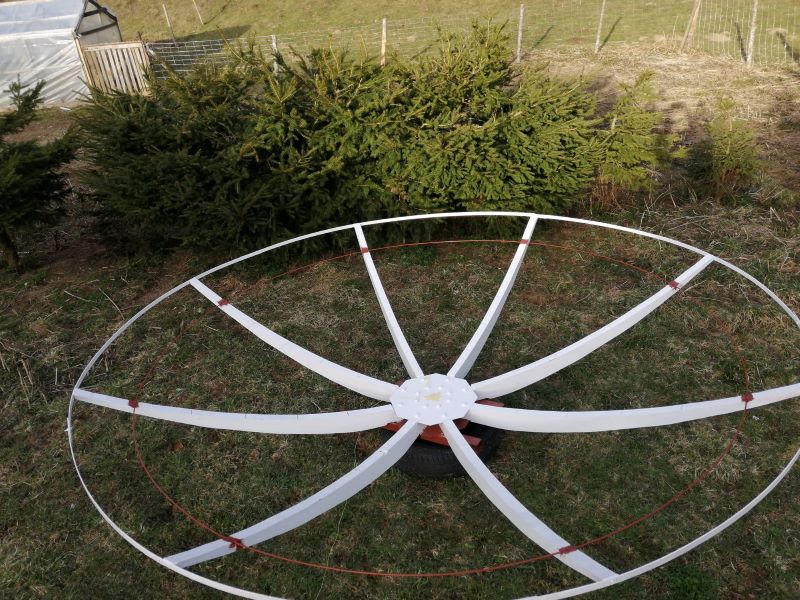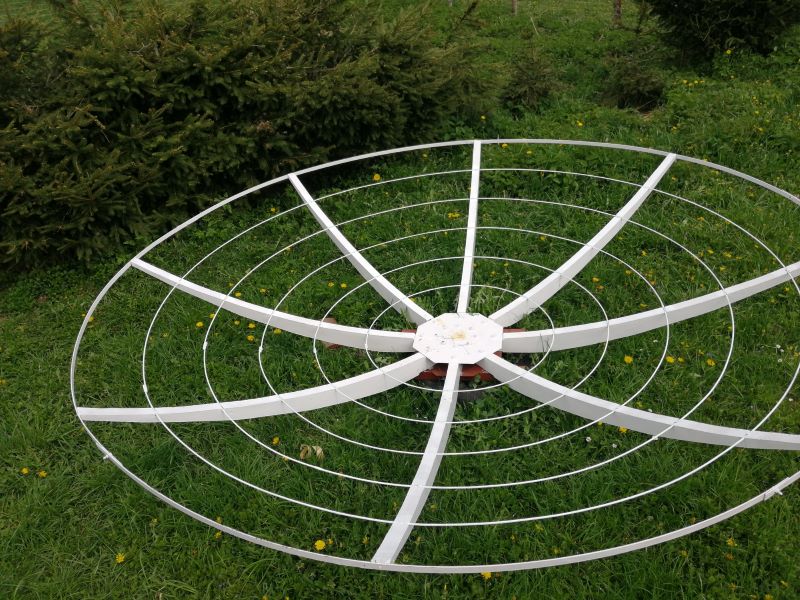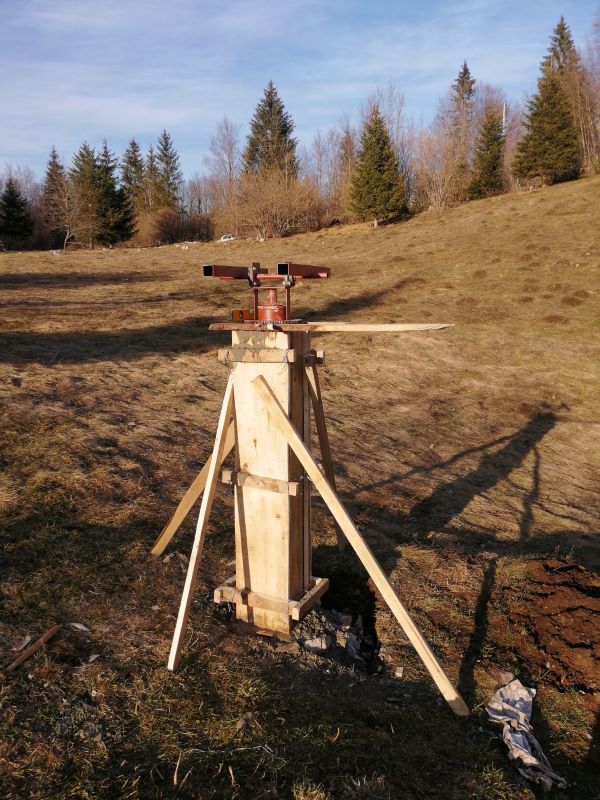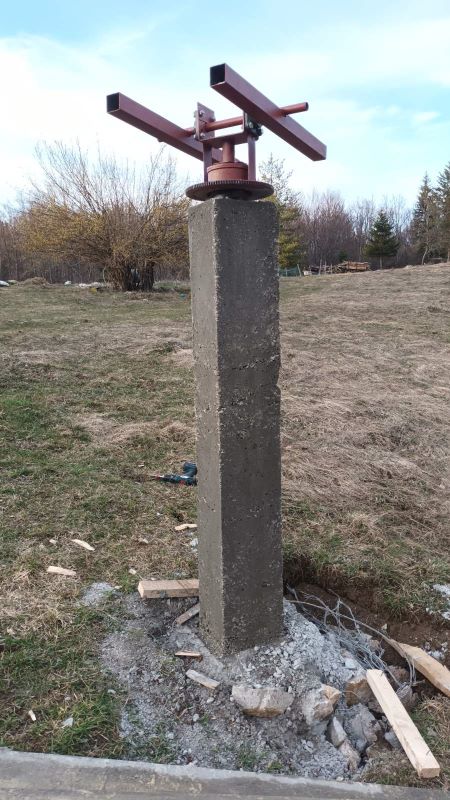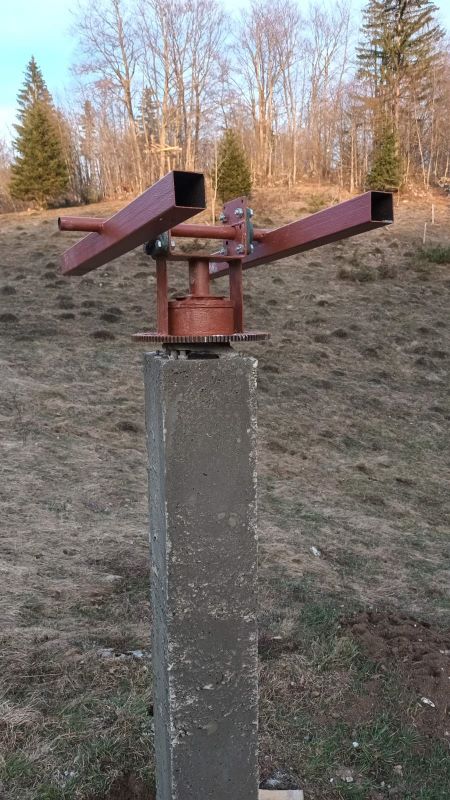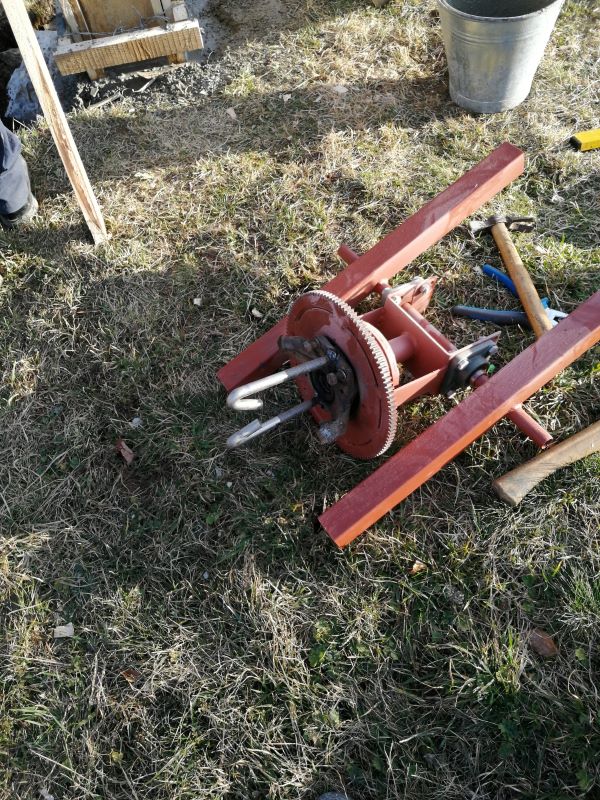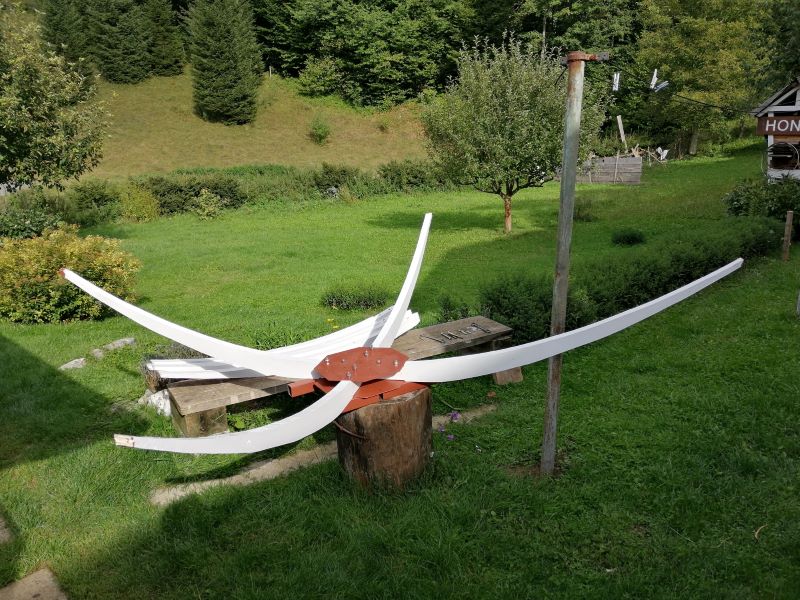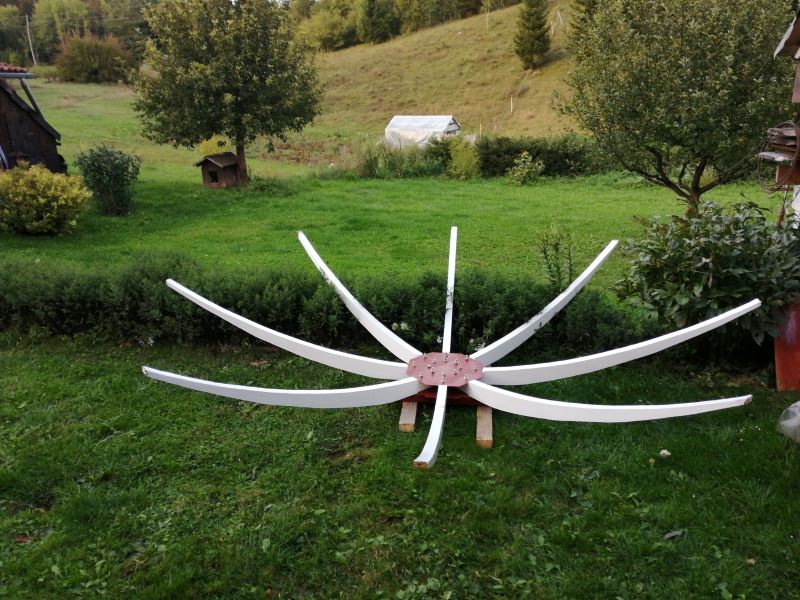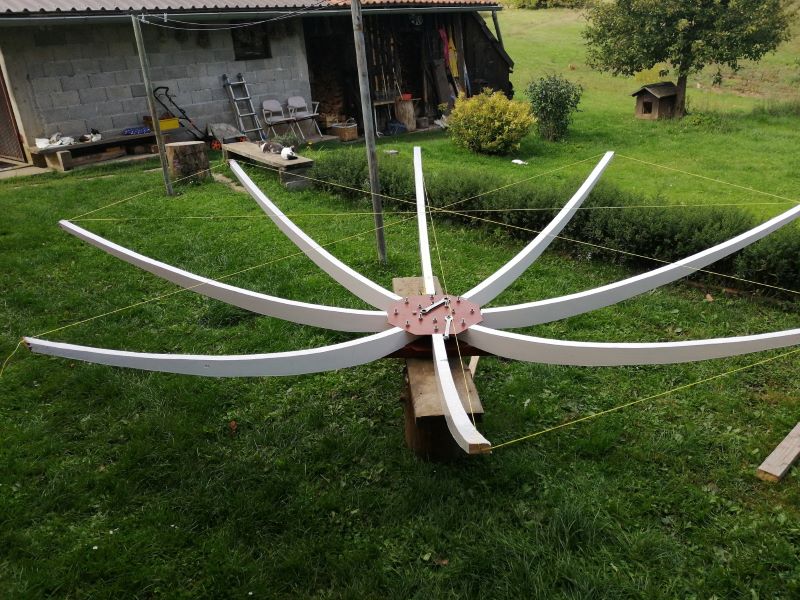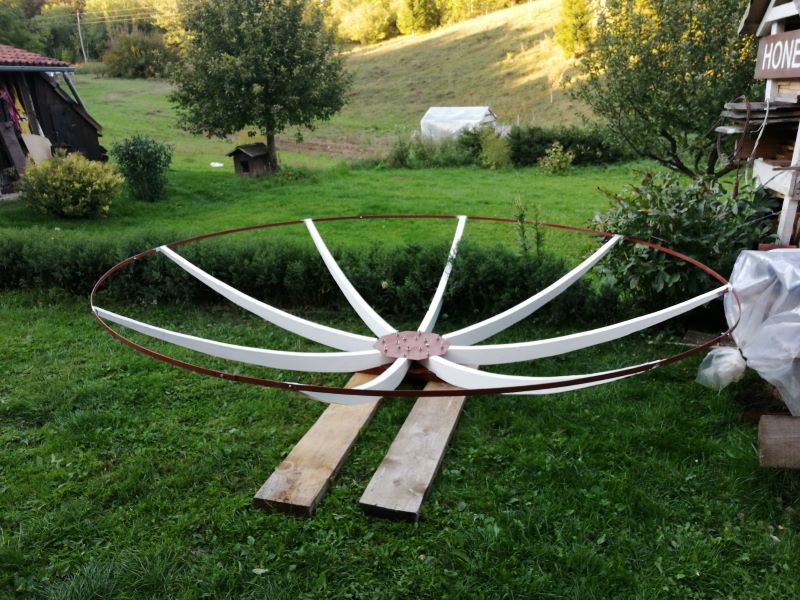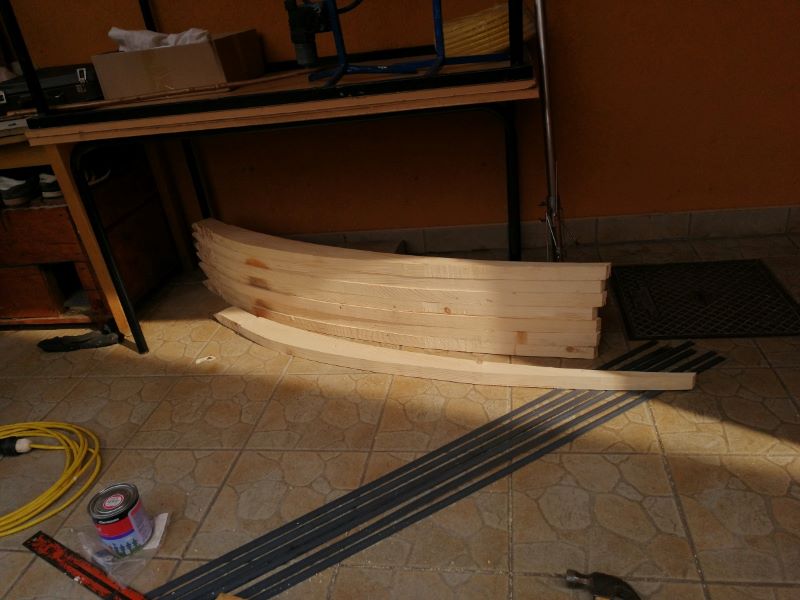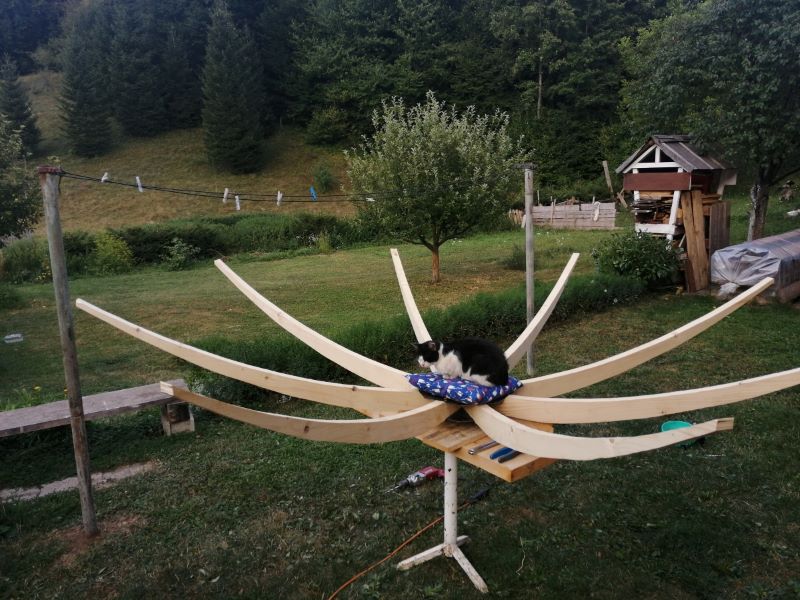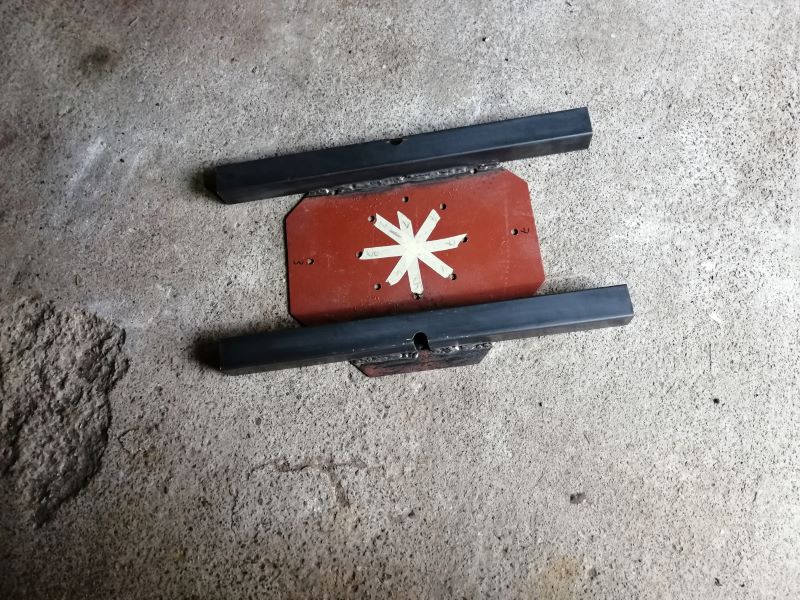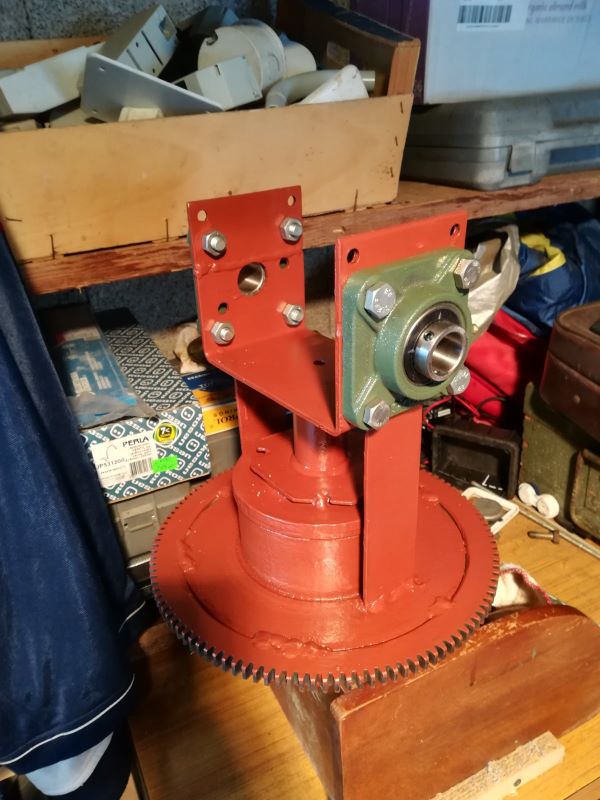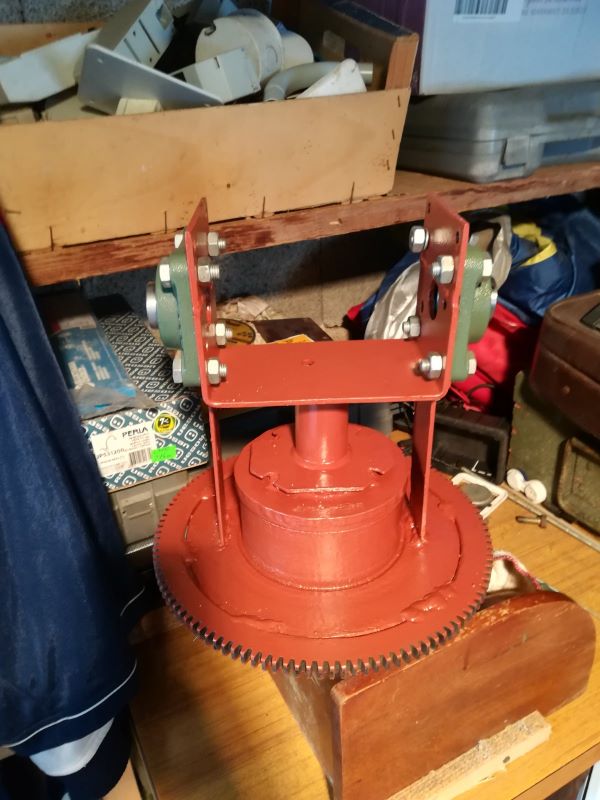
Radiotelescope news
Chronological review of my work on radiotelescope, from the beginning of the build, to the data collecting and processing.
The construction began in Autumn of 2021. The radiotelescope is made of wooden elements attached together with a metal plate and covered in metal mesh.
Examples
3/ 2025
Example of one program run. Data is collected for around 2 minutes, then the observed frequency is shifter and dark frame is taken. To get the final data, we subtract light and dark frame.
Sometimes the final data will be at an angle, so we do a linear regression on edge data, and correct all data to get nice flat noise level at the bottom. We also need to calculate noise level and if it's above or under zero, we correct for that as well. The result is data with flat background noise level across observed frequencies. We sum all the values in the graph to get total noise power of the signal. That value is then placed on the map on the appropriate RA, Dec coordinates.
An example of first run of the data collection: The graph above only shows total noise power in RA, Dec coordinates.
The rotational speed of the galaxy can be determined from extracting graph peaks frequencies and comparing them to 1420.4MHz, calculating Doppler shift and the speed of the hydrogen cloud.
Data collection phase
10/ 2024
After working through network issues, and then Orange Pi burning out, the radiotelescope is finally in data collection phase. I'm doing the scans of the sky with the duration of 48 hours per scan, then moving 3 degrees in altitude and collecting for 48 hours again.
First sky map is expected to be finished in March-April 2025.
Further improvements to the radiotelescope include connecting the motor on the mount to be able to move it remotely.
First light
2/ 2024
First light of the telescope. The feedhorn was mounted, connected to the LNA and raspberry pi was placed in main cabinet. Hydrogen line was detected but there is a lot of interference in the signal in the form of narrow spikes. Interference was traced to the RTL SDR receiver under the dish, which was not enclosed in metal foil. After enclosing it in aluminium foil the interference was mainly gone. I plan to move the SDR to near the edge of the dish to further reduce interference it emits.
Feedhorn First Light
11/ 2023
Bare feedhorn was tested using Radio astronomy software and it successfully detected Hydrogen line, even from noisy Zagreb. My own software was adjusted to reduce background noise and correct the slant in the pre-final data by calculating best fit .
Feedhorn supports
6-7/ 2023
Welding of the feedhorn supports and painting them white.
Building of the feedhorn ring clamp and attaching it to feedhorn supports.I finished the new aluminium feedhorn as the last one was of questionable quality. Using a wooden mould and concrete, I made two dish counterweights.
Building of the dish
6-8/ 2022
Making of the wooden half-parabola arcs. 8 of them will make up the parabolic reflector dish. They were painted with wood primer, then with several white top coats. I also cut and drilled holes into central metal plates that the wooden arcs will be bolted onto. I welded two pieces of square metal tube on one plate to be able to mount it on the mount. The Cat approves.
Making of the mount
3/ 2022
I made the mount by taking a wheel hub for azimuthal rotation. I welded a "U" metal bracket on top of it and added two bearings on the sides for altitude rotation.
I also added a flywheel teeth ring to be able to rotate the mount with a motor.Lastly, I painted it with primer for metal.
Copyright 2024-2025, Mario Matovina
Send me an e-mail

